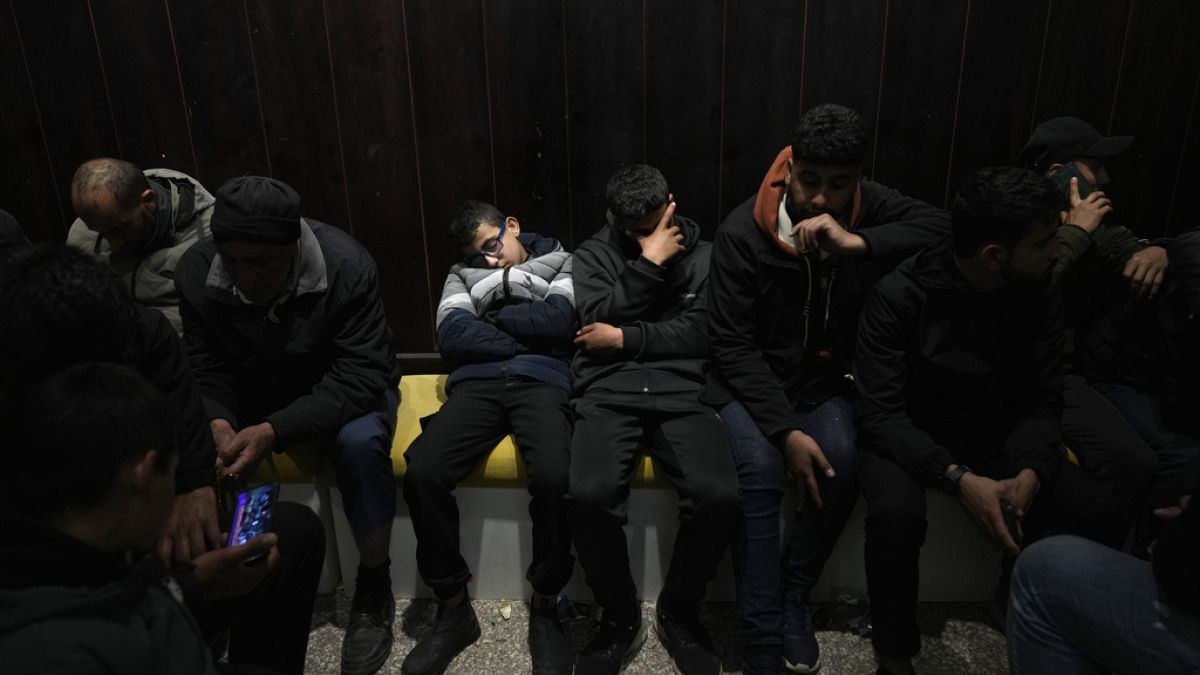How to watch the US election like a pro
Here's what you need to know as Donald Trump and Kamala Harris compete for the presidency.
WASHINGTON — The United States is on the cusp of a historic presidential election that will shape world politics for years to come. More than 160 million voters are expected to cast their ballots on Tuesday Nov. 5.
The contest will either deliver an astonishing return for maverick Republican former President Donald Trump, or America’s first woman in the White House with Vice President Kamala Harris.
At stake is not only the leadership and future direction of the world’s biggest economy and military superpower: The result will have potentially seismic ramifications around the globe, from the wars in Ukraine and the Middle East to mounting tension and trade rivalry with China.
The 2024 contest has been one of the most dramatic in history. In the summer, gaffe-prone President Joe Biden stumbled and lost his way disastrously during his TV debate against Trump and eventually withdrew, with only a little over three months left before election day.
Harris then took over the Democratic nomination, but not before Trump was shot in an attempted assassination, avoiding death by the narrowest of margins. A second alleged attempt on Trump’s life followed two months later.
With the polls deadlocked, and claims of misconduct and even Russian interference growing, both sides are preparing for a ferocious legal battle in the days and weeks after the vote. Here is our guide to what is shaping up to be a bumpy ride.
How does the election work?
Every American voter gets to cast a vote for president, but the result is not decided by who wins the most supporters across the country. Instead, each one of America’s 50 states and Washington D.C. holds its own contest. These state-level ballots feed their results into the national system called the “electoral college” and it is here where the outcome is decided.
Every state has a set number of electoral college votes and, with a couple of exceptions, the candidate winning a popular majority of votes in each state then gets assigned all that state’s electoral college votes. So if Trump wins the most votes in Pennsylvania, for example, he takes all the state’s 19 electoral college votes.
There are 538 electoral college votes in total. The candidate who wins a majority of these votes — 270 or more — is elected president.
What are the swing states?
Conventional wisdom in the U.S. holds that most states have a very clear preference for either the Republican or Democratic candidate and that this rarely changes. That leaves only seven key “swing” states which will decide the outcome.
These are grouped in the so-called Rust Belt of declining former industrial heartlands in the North and East — Michigan, Pennsylvania and Wisconsin, all three of which Biden won in 2020; and a clutch of states in the Sun Belt — Arizona, Georgia, Nevada and North Carolina. Polling shows Trump doing better in these Sun Belt states than in the Rust Belt ones.
When will we know the result?
Don’t hold your breath. In fact, it may be best to make some coffee. Or maybe book a short vacation.
In 2020, it took several days before the major news media called the election for Biden. Even that wasn’t the end of the matter. Legal challenges by the Trump team continued for weeks and, infamously, some of his supporters refused to accept the result even after that and stormed the Capitol on Jan. 6, 2021, to try to stop Congress formalizing Biden’s victory.
In 2000 — the most contested of elections — the impasse continued for a month with the crucial state of Florida in the balance until the Supreme Court eventually ruled in favor of George W. Bush.
Will we get any clues?
America is a sprawling country with a quirky electoral map. The first “result” to gather media attention won’t even count. The tropical island territory of Guam in the Western Pacific is not able to participate in the election because it’s not formally a U.S. state.
But it has conducted a “straw poll” of voters at every election since 1980 to express a preference, and will send its result to Congress all the same. In most cases (Trump’s win in 2016 being one exception) the result from Guam has aligned with the eventual national winner. Since the territory is 15 hours ahead of the U.S. mainland, its straw poll will be scrutinized as an early indicator of the final outcome.
Results are then declared for individual counties within the states as they are counted in the hours that follow the close of polls. Key bellwether precincts and counties to watch out for include Door County in Wisconsin and Northampton County in Pennsylvania, both of which have a record of backing the eventual victor.
TV networks and the Associated Press play a significant role and compete to declare the winners, “calling” states as having voted for one or other candidate when they believe they have enough results from the electoral precincts. Then when they are confident, the media networks will eventually call the overall winner, too. With a huge reputational risk involved if they get it wrong — and if the contest is as close as polls predict — it could be a while before anyone is brave enough to call it.
What are the issues defining the campaign?
Harris has made championing abortion rights the core of her campaign. Since the Supreme Court overturned Roe v Wade in 2022, states have been putting forward their own measures to restore women’s rights to choose, a policy that is nationally popular. She has attacked Trump’s character, describing him as a fascist and arguing that the future of democracy is on the line.
For his part, Trump has emphasized the economy, pledging tax cuts and slamming Biden’s record overseeing a period of high inflation. A crackdown on immigration remains an explosive and central part of his policy offer, and he frequently courts controversy to get his point across.
Could the polls be wrong?
Of course. Polling is a media obsession and generates enormous amounts of coverage, dominating the contest and shaping the entire debate. But the record of pollsters in recent U.S. presidential elections is a poor one.
As in other parts of the world such as the U.K., the pollsters have historically underestimated support for the right-wing party, in America’s case the Republicans. That meant Trump’s win in 2016 against Hillary Clinton was a huge shock to the political establishment. Pollsters tried to adjust their methods but still underestimated Trump in 2020. Will they do so again?
There’s clearly also a risk of overcompensation. Some experts have started to ask whether the polls are now understating Harris’s support. They suspect there may be evidence of “herding,” with risk-averse pollsters clustering their results around the idea of a tied contest so they don’t look wrong.
One theory is that there is a group of “shy Harris” backers who are reluctant to reveal their preference in surveys. These, the theory goes, are traditional Republicans who dislike Trump and had previously backed Nikki Haley, who pulled out of the presidential race in March.
If the polls are wrong, the result could become clear quite quickly. If they’re not, it might be time to put some more coffee on.
What's Your Reaction?



















































